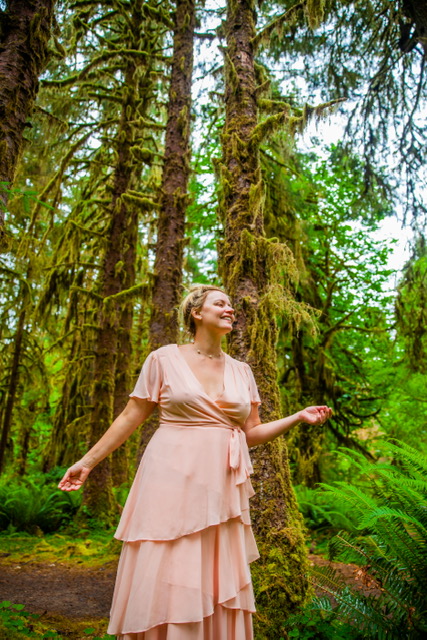The Hoh National Forest: The greenest forest in the USA!
Grab your rain jackets and come along this magical article with me as I tell you all about The Hoh National Rain forest, located in the Olympic National Park. One of the four rain forests in the park, this place is made of magic and is my personal favorite. Have you ever seen the Disney film “Fern Gully”? This forest reminded me of that. A place that is peaceful, exotic, and free from human intervention. I had only read about the rain forest in travel magazines but I had to see what all the fuss was about. I felt like I was waltzing through a Monet painting. The forest was filled with beautiful shades of green everywhere and when the rain falls, you can feel nature come to life. Every year, this forest gets as much as 14 feet of rain per year! That’s wild! We spotted some amazing elk along the trail and it made for some beautiful photo ops. This rain forest is located just outside of Forks, Washington and if you’re familiar with that city, you’ll know that Twilight was filmed and takes place there. While I was there, I kept an eye out for Edward and Jacob! LOL! It is completely mystifying and ethereal. The most common hike is the Hall of Mosses Trail (0.8 miles)which is a short loop through some amazingly old and mossy forests. While this is nice, the hike everyone needs to do is the trip up to the Spruce Nature Trail (1.2 miles) where a gorgeous waterfall and creek weave their way through the lush, dense rain forest. The trail is mostly flat and is a good hike for kids who like the forest. If you love poetry like I do, you can find amazing quotes from famous poets that grace the trail and add a nice touch. Trust me, if there is any place in the Pacific Northwest to see before you die, this rain forest is a MUST. See for yourself the beauty above and below…
Trees in The Hoh National Forest
The most common trees located in the forest are The Western Hemlock Tree (which also happens to be Washington’s state tree) and The Sitka Spruce. These can reach over 300 feet high in length and seven feet in diameter. Most of the trees are completely covered with hanging moss and ferns and the rain allows them to stay lush and verdant. If you are lucky, you may spot an Ariolimax columbianus (a banana slug), which is the second largest species of land slug in the world. The most wonderful fact about this ecosystem is that it has remained unchanged for thousands of years and it is the most carefully preserved rain forest in the northern hemisphere.
Looking to visit the other rain forests in Olympic National Park? These are the other parks listed below:
Quinault Rain Forest-home to the largest Sitka Spruce Tree (it’s over 1,000 years old!) It is a lush forest that contains many waterfalls including Merriman Falls. You may also view some amazing birds including the marmot.
*Directions to see the world’s largest Sitka spruce tree: take US Highway 101 to the junction with South Shore Road. Turn east on South Shore Road and travel 3.2 miles to the Big Spruce Trailhead. Parking is on the right. The trailhead is across the road.
2. Queets Rain Forest- another lush paradise is located in the Queets Rain Forest. The local fauna include the bobcat, cougar, the pacific tree frog, elk, and black tailed deer. You can also spot the banana slug here is well. Lots of fishing and great trails in the area.
3. Bogachiel Rain Forest: overlooked by the masses who head to the mosses of the Hoh, the Bogachiel Rainforest might be one of America’s best kept secrets. Just a few short miles form the small logging town of Forks, Washington, this wild and scenic river on the Olympic Peninsula is home to iconic rainforest trails and access to a remote corner of Olympic National Park.
How to get there (Directions to the Hoh National Forest)
The drive from Seattle runs about 3-4 hours so if you’re going to visit, be sure to plan accordingly. In my opinion, it is too far to go just for a day trip (unless you’re pressed for time). It takes a while because you have to drive around the forest to see it. Located 31 miles south of Forks off the 101 freeway.







